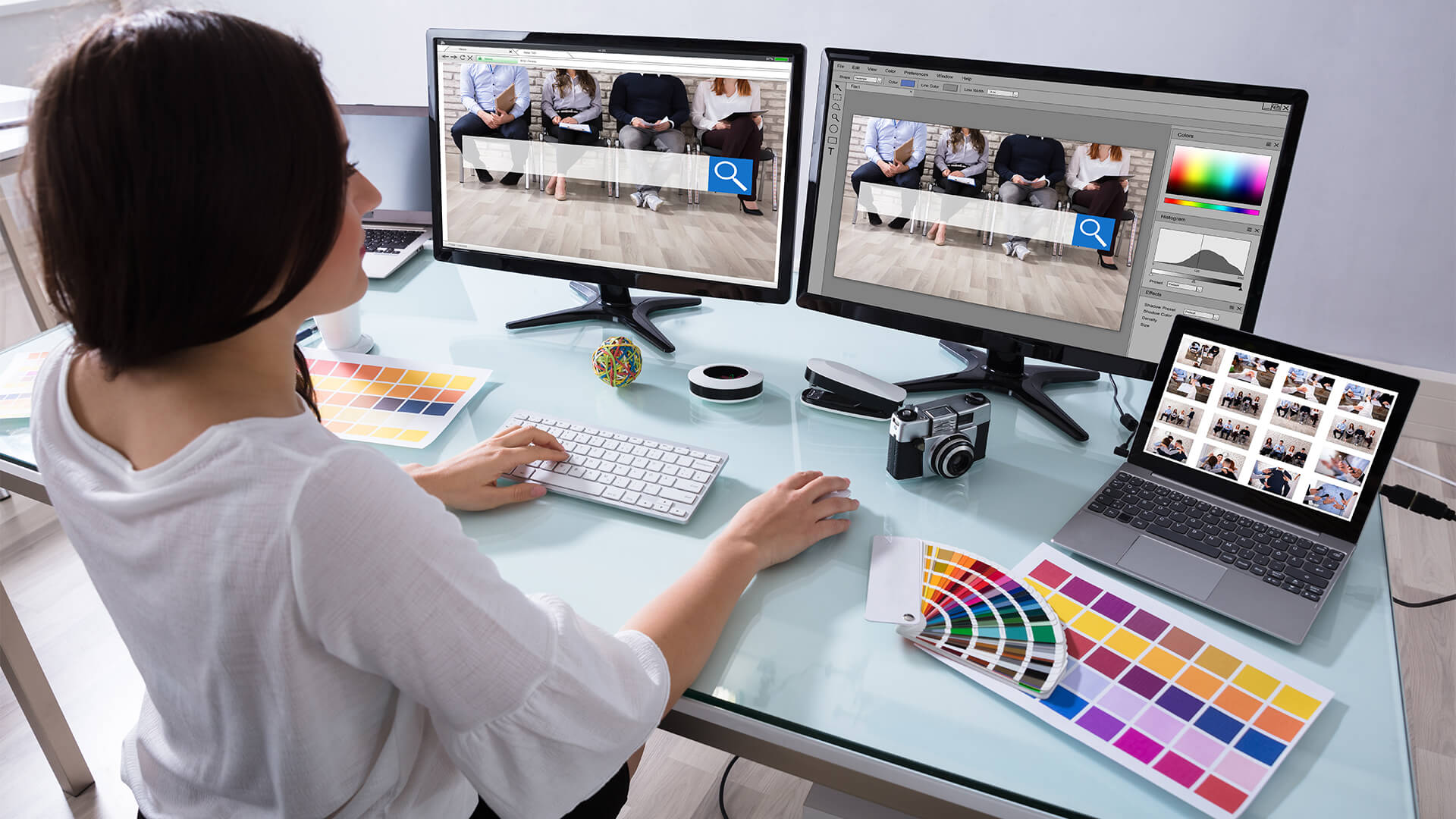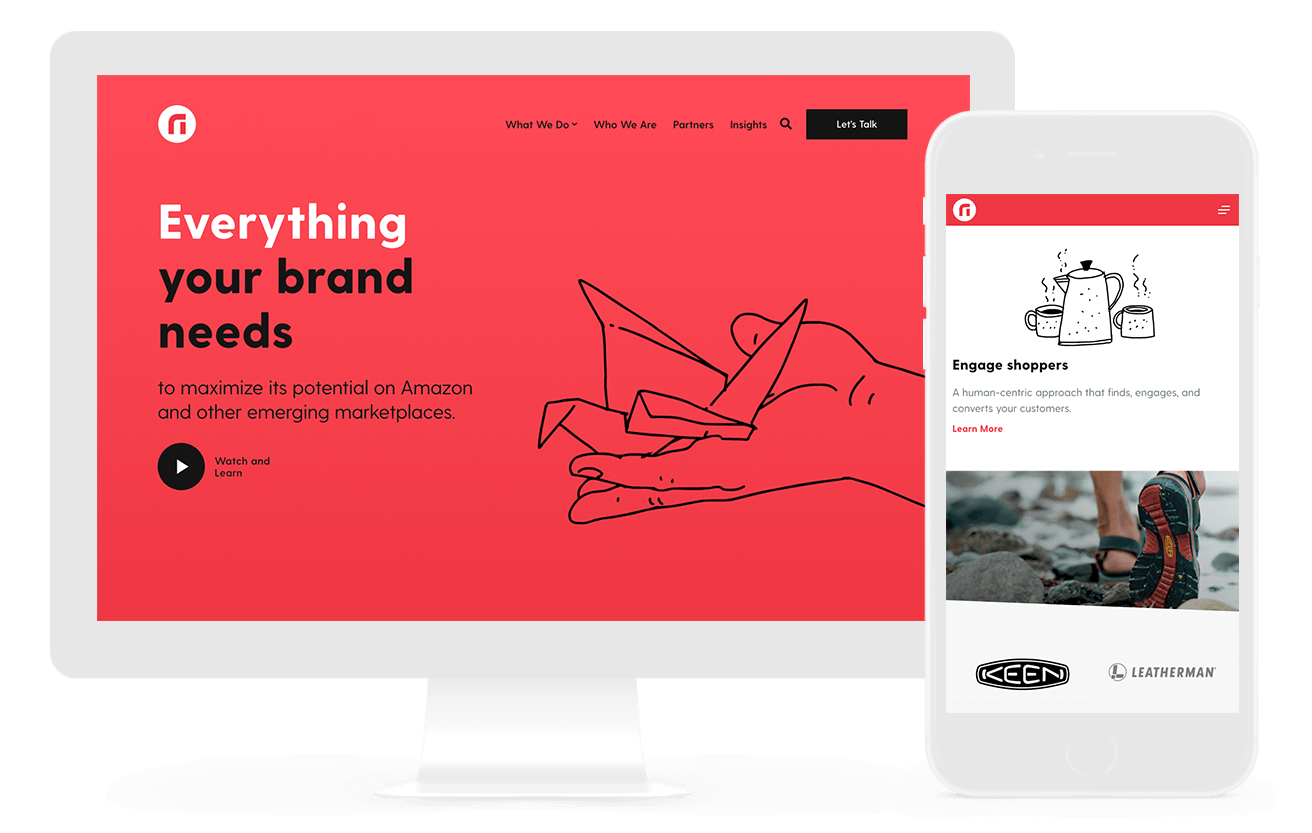All Categories
Featured
Table of Contents
- – Web Design Studio & Digital Marketing Agency •...
- – Web Page Design: A Comprehensive Guide - Adob...
- – What Is Web Design? - Interaction Design Foun...
- – Learning Web Design: A Beginner's Guide To Ht...
- – What Is Web Design (And How Do I Get It Right...
- – Web Design Services - Networksolutions.com Ti...
- – What Is Web Design? The Ultimate Guide To We...
- – Arch Web Design: Top-rated Web Design Agency...
- – Html Responsive Web Design - W3schools Tips ...
- – Arch Web Design: Top-rated Web Design Agency...
- – Mrw Web Design - Wordpress Websites For Nonp...
Web Design Studio & Digital Marketing Agency • Gravitate Tips and Tricks:
Quick summary Use and the utility, not the visual style, determine the success or failure of a website. Considering that the visitor of the page is the only individual who clicks the mouse and for that reason chooses whatever, user-centric style has developed as a basic technique for effective and profit-oriented website design - web design frederick md.
and the energy, not the visual design, identify the success or failure of a site. Since the visitor of the page is the only individual who clicks the mouse and therefore chooses whatever, user-centric style has ended up being a standard method for successful and profit-oriented website design. After all, if users can't use a function, it might as well not exist.
g. where the search box should be placed) as it has currently been done in a variety of posts; instead we concentrate on the methods which, used appropriately, can result in more advanced style decisions and simplify the procedure of viewing provided information. Please observe that you might be interested in the usability-related posts we've released before: Principles Of Good Site Design And Efficient Website Design Guidelines, In order to utilize the concepts appropriately we first need to understand how users communicate with websites, how they think and what are the fundamental patterns of users' habits.
Web Page Design: A Comprehensive Guide - Adobe Xd Ideas Tips and Tricks:
Visitors glance at each new page, scan a few of the text, and click on the first link that captures their interest or slightly resembles the thing they're looking for. There are big parts of the page they don't even look at. Most users search for something intriguing (or beneficial) and clickable; as soon as some appealing candidates are discovered, users click.
If a page provides users with top quality material, they are prepared to compromise the content with ads and the design of the website. This is the reason that not-that-well-designed sites with high-quality material acquire a great deal of traffic over years. Content is more essential than the style which supports it.

Really basic principle: If a site isn't able to fulfill users' expectations, then designer stopped working to get his job done correctly and the company loses cash. The higher is the cognitive load and the less user-friendly is the navigation, the more prepared are users to leave the site and search for options.
What Is Web Design? - Interaction Design Foundation (Ixdf) Tips and Tricks:
Neither do they scan webpage in a direct fashion, going sequentially from one site area to another one. Rather users satisfice; they choose the first reasonable choice. As quickly as they find a link that appears like it might result in the goal, there is a great chance that it will be right away clicked.
It does not matter to us if we comprehend how things work, as long as we can use them. If your audience is going to act like you're designing billboard, then style fantastic signboards." Users wish to have the ability to manage their browser and rely on the consistent data discussion throughout the website.
If the navigation and site architecture aren't intuitive, the number of question marks grows and makes it harder for users to comprehend how the system works and how to get from point A to point B. A clear structure, moderate visual clues and easily identifiable links can help users to find their course to their objective.
Learning Web Design: A Beginner's Guide To Html, Css ... Tips and Tricks:

Given that users tend to explore sites according to the "F"-pattern, these three declarations would be the very first aspects users will see on the page once it is packed. The style itself is simple and intuitive, to understand what the page is about the user requires to search for the answer.
Once you have actually attained this, you can communicate why the system is useful and how users can benefit from it. Do Not Misuse Users' Perseverance, In every job when you are going to use your visitors some service or tool, attempt to keep your user requirements minimal.
Newbie visitors are willing to, not filling long web types for an account they might never ever use in the future. Let users check out the site and discover your services without forcing them into sharing personal information. It's not sensible to force users to get in an e-mail address to evaluate the function.
What Is Web Design (And How Do I Get It Right)? - 99designs Tips and Tricks:
And that's what you want your users to feel on your web website. The registration can be done in less than 30 seconds as the form has horizontal orientation, the user does not even need to scroll the page.
A user registration alone is enough of an obstacle to user navigation to cut down on incoming traffic. Manage To Focus Users' Attention, As sites offer both static and dynamic content, some elements of the user interface bring in attention more than others do.
Focusing users' attention to specific locations of the website with a moderate use of visual aspects can help your visitors to obtain from point A to point B without thinking of how it really is supposed to be done. The less concern marks visitors have, the they have and the more trust they can establish towards the business the site represents.
Web Design Services - Networksolutions.com Tips and Tricks:
Make Every Effort For Function Exposure, Modern web styles are generally criticized due to their approach of guiding users with aesthetically appealing 1-2-3-done-steps, large buttons with visual results and so on. From the design perspective these elements really aren't a bad thing.
The site has 9 primary navigation alternatives which are visible at the first glimpse. What matters is that the material is well-understood and visitors feel comfortable with the way they communicate with the system.
Instead a rate: simply what visitors are looking for. An ideal solution for reliable writing is touse short and succinct phrases (come to the point as quickly as possible), usage scannable design (categorize the content, utilize multiple heading levels, utilize visual elements and bulleted lists which break the circulation of consistent text blocks), usage plain and unbiased language (a promotion does not require to sound like advertisement; provide your users some reasonable and objective reason why they need to use your service or stay on your site)6.
What Is Web Design? The Ultimate Guide To Website Design ... Tips and Tricks:
Users are seldom on a website to take pleasure in the design; furthermore, for the most part they are searching for the information in spite of the design - web design frederick md. Strive for simpleness instead of complexity. From the visitors' point of view, the very best website design is a pure text, without any ads or additional content blocks matching precisely the question visitors utilized or the material they have actually been searching for.
Finch plainly presents the details about the site and provides visitors an option of alternatives without overcrowding them with unnecessary material. 7. Do not Be Afraid Of The White Space, Actually it's actually tough to overstate the value of white space. Not only does it assist to for the visitors, but it makes it possible to view the details presented on the screen.
Complex structures are more difficult to read, scan, evaluate and work with. If you have the option in between separating 2 design sections by a visible line or by some whitespace, it's generally better to use the whitespace solution. (Simon's Law): the much better you handle to provide users with a sense of visual hierarchy, the simpler your material will be to view.
Arch Web Design: Top-rated Web Design Agency For Saas ... Tips and Tricks:
The same conventions and rules must be used to all elements.: do the most with the least quantity of cues and visual aspects. Clearness: all components should be developed so their significance is not ambiguous.
Conventions Are Our Good friends, Conventional design of website aspects doesn't result in a dull website. In reality, as they minimize the learning curve, the need to determine how things work. For example, it would be an usability problem if all sites had various visual discussion of RSS-feeds. That's not that different from our regular life where we tend to get utilized to basic concepts of how we organize data (folders) or do shopping (positioning of products).
comprehend what they're anticipating from a site navigation, text structure, search placement etc. A common example from usability sessions is to equate the page in Japanese (presuming your web users don't know Japanese, e. g. with Babelfish) and offer your functionality testers with a task to discover something in the page of various language.
Html Responsive Web Design - W3schools Tips and Tricks:
Steve Krug suggests that it's much better to, however benefit from conventions when you do not. 10. Test Early, Test Often, This so-called TETO-principle must be applied to every web style project as use tests typically provide into substantial problems and problems related to an offered layout. Test not too late, not too little and not for the wrong reasons.
Some crucial points to keep in mind: according to Steve Krug, and testing one user early in the project is much better than screening 50 near the end. Accoring to Boehm's first law, mistakes are most regular during requirements and style activities and are the more pricey the later on they are removed.
That implies that you create something, test it, fix it and then check it again. There may be issues which have not been found during the very first round as users were almost obstructed by other problems. usability tests. Either you'll be indicated the problems you have or you'll be indicated the lack of significant style flaws which is in both cases a beneficial insight for your project.
Arch Web Design: Top-rated Web Design Agency For Saas ... Tips and Tricks:

This holds for designers also. After you've worked on a website for couple of weeks, you can't observe it from a fresh perspective anymore. You understand how it is constructed and for that reason you understand precisely how it works you have the knowledge independent testers and visitors of your website would not have.
It can be linked to other areas such as graphic style, user experience, and multimedia arts, however is more aptly seen from a technological standpoint. It has ended up being a large part of individuals's everyday lives. It is difficult to picture the Internet without animated graphics, different styles of typography, background, videos and music.

During 1991 to 1993 the World Wide Web was born. Text-only pages could be viewed utilizing an easy line-mode web browser. There had actually been no integrated approach to graphic style elements such as images or noises.
Mrw Web Design - Wordpress Websites For Nonprofits ... Tips and Tricks:
The W3C was created in October 1994 to "lead the Internet to its full potential by developing typical procedures that promote its advancement and ensure its interoperability." This dissuaded any one business from monopolizing a propriety web browser and programs language, which might have changed the effect of the Internet as a whole.
As this has occurred the technology of the web has likewise moved on. There have actually likewise been significant changes in the way people use and access the web, and this has changed how websites are created.
Learn more about Lovell Media Group LLC or TrainACETable of Contents
- – Web Design Studio & Digital Marketing Agency •...
- – Web Page Design: A Comprehensive Guide - Adob...
- – What Is Web Design? - Interaction Design Foun...
- – Learning Web Design: A Beginner's Guide To Ht...
- – What Is Web Design (And How Do I Get It Right...
- – Web Design Services - Networksolutions.com Ti...
- – What Is Web Design? The Ultimate Guide To We...
- – Arch Web Design: Top-rated Web Design Agency...
- – Html Responsive Web Design - W3schools Tips ...
- – Arch Web Design: Top-rated Web Design Agency...
- – Mrw Web Design - Wordpress Websites For Nonp...
Latest Posts
Web Design Services + Website Development Agency Tips and Tricks:
Web Design Services + Website Development Agency Tips and Tricks:
Responsive Web Design - A List Apart Tips and Tricks:
More
Latest Posts
Web Design Services + Website Development Agency Tips and Tricks:
Web Design Services + Website Development Agency Tips and Tricks:
Responsive Web Design - A List Apart Tips and Tricks: